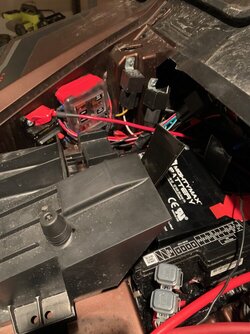J
Hi folks.
I've done some searching but can't find any info on running 2 regular batteries in parallel.
Looks like everyone is adding a second deep cycle battery with an isolator to run all their accessories.
However, I don't have a lot of accessories. I have a winch which is a biggie when it's being used but is only used a few times a year plus lifting my plow which should't tax a 5k lb winch much to lift a couple huntred pound plow a few inches with block and tackle set up.
I am thinking 2 batteries in parallel like diesel trucks use would be a better way to go and a lot cheaper and simpler to install. This would give my starting system more umph in the cold and should be better for the tranny etc.....
I will be running Camso tracks and plowing so a lot of cold winter operations where I want extra starting power.
What are the opinions of the electrical pro's out there???
I've done some searching but can't find any info on running 2 regular batteries in parallel.
Looks like everyone is adding a second deep cycle battery with an isolator to run all their accessories.
However, I don't have a lot of accessories. I have a winch which is a biggie when it's being used but is only used a few times a year plus lifting my plow which should't tax a 5k lb winch much to lift a couple huntred pound plow a few inches with block and tackle set up.
I am thinking 2 batteries in parallel like diesel trucks use would be a better way to go and a lot cheaper and simpler to install. This would give my starting system more umph in the cold and should be better for the tranny etc.....
I will be running Camso tracks and plowing so a lot of cold winter operations where I want extra starting power.
What are the opinions of the electrical pro's out there???


